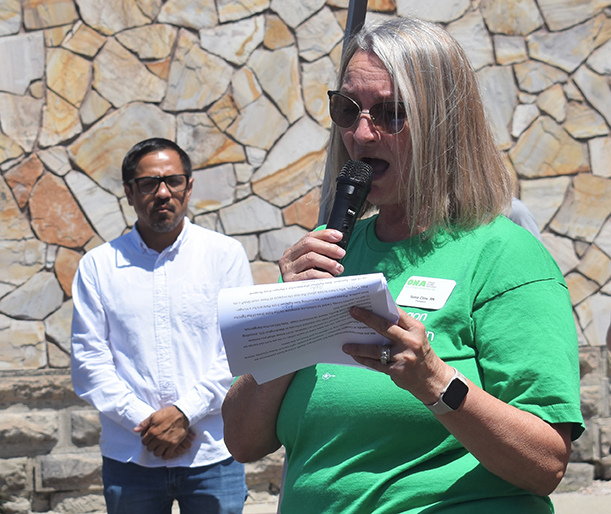COLUMN: Winter recedes to reveal an unkempt yard
Published 8:30 am Monday, February 26, 2024
I walked to the shed at the southwest corner of my property on a recent morning, engaged in an errand of an automotive nature, and I noticed that the yard was rather disheveled.
Snow, the pancake makeup of landscaping, was absent, and the unkempt state of the lawn and the flowerbeds was laid bare.
On the way back to the driveway, where the crankcase of our Toyota FJ Cruiser awaited draining and refilling with fresh 5W-30, I set the oil pan, filter wrench and funnel on our back steps and had a look around.
The scene depressed me slightly.
Slightly because I understand, after nearly three decades on the place, that it’s never quite so squalid as on a snow-free winter day.
Particularly when, as was the case on this day, the sky is overcast, robbing the scene of even the slight improvement that sunshine affords.
In some years this unsightly apotheosis arrives in February.
More often it is March.
Whatever the month, never does the promise of photosynthesis seem so distant, so uncertain.
I know better, of course.
I know that, come the first afternoon when the sun casts a warmth which can be detected by skin as well as thermometer, somewhere a tendril of green will be revealed.
A blade of grass, perhaps.
More likely a bit of crocus or grape hyacinth, those pioneers of spring.
Still and all, at some point each winter, as I take in the dormant lawn and the leafless limbs of the willows, I feel a peculiar trepidation.
A nagging sense that perhaps this year the foliage won’t rouse itself as it always has before.
It’s a distressing prospect.
I can scarcely imagine a summer passing bereft of the thick shade cast by the willows and the old ash that rises above the shed.
Or with no soft green turf for bare feet to step on, cool even at the apex of an August heatwave.
I don’t really doubt that all will be well in the end.
Yet the difference between the extremes of the seasons is so dramatic that my confidence in the reliable rhythm sometimes slips.
It is much the same with weather.
At dusk of a January day when the temperature has slunk down to near zero, as I stand outside and shiver, the reality that, in just a handful of months and in this same spot, I will feel as though I were in front of an oven with an open door, seems farcical, even as I recognize, subconsciously, that it is also certain.
It is a queer combination, and a queer sensation.
Pretty much any yard which, like ours, is well north of the equator and combines the deciduous and the evergreen, will suffer from a certain stark appearance during winter.
With neither leaves nor blossoms to provide contrast, the predominant colors are a range of drab browns, tans and grays.
Our array of shrubs, which at the peak of their summer show span the palette with flowers of vibrant white and yellow, light pinks and dark purples, various hues of blue, instead present the same dour visage, rather like immobile tumbleweeds.
The willows, whose dense complement of limbs lavishes those great swathes of summer shade, in winter shed limbs with aplomb.
Even during the gentlest zephyr, the willows will cast off a few.
But after a true gale, without which no winter hereabouts would be complete, our lot is strewn with detritus. Willows, I’ve noticed, shed with the alacrity of a mange-stricken sheepdog.
As I paused on the way to the driveway, petroleum matters on my mind, the willow debris was the most conspicuous sign of winter’s doldrums.
The wind had blown with some authority over the previous week, and dozens of limbs lay about, ranging from pencil-size twigs to a couple nearly as thick around as a wrist, and several feet long.
Eager to replenish the Toyota’s lifeblood before the rain or snow returned — when you lack a garage, car maintenance, like a baseball game, is subject to rescheduling — I made a desultory walk around, heaving a few of the larger limbs over the fence.
Probably I’ll take a more thorough tour soon, on a day when the sun shines, the air lies lightly on exposed skin and the concept of spring seems more plausible.
I’ll don gloves, pick up one of our plastic leaf rakes and assemble a few piles. It is light work, but satisfying, the results tangible.
I will get frustrated occasionally. Although the rake corrals all but the longest limbs, the pieces tend to wind round the flexible tines, where they can be quite stubborn.
And of course limbs fall where they will, including in places where the rake is useless. Our pair of spirea bushes stand side-by-side beneath the weeping willow, the biggest shedder on the place.
Branches resist extrication from the spireas as defiantly as from the rake.
And when a limb finally lets go it’s apt to leave a mark, like a bullwhip. I’m convinced willow limbs go for the eyes.









